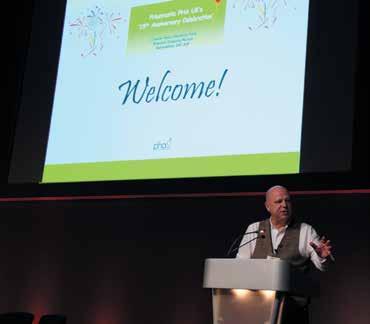The PH
National Audit
The National Audit of PH has been running for five years now. But what’s it all about? Here, Simon Gibbs gives an overview of this important statistical exercise to Steph Pollard.
T
he NHS’ specialised service for PH benefits from one of the most robust, routine monitoring exercises in the UK – if not the world. The NHS’ specialised service for PH benefits from one of the most robust, routine monitoring exercises in the UK – if not the world. The National Audit of PH has almost unprecedented levels of engagement, with every PH centre in the country recording key facts and figures about assessments, diagnoses, treatments, therapies and outcomes on a day-to-day basis. This thorough data collection provides statistical evidence to inform and support our long-term understanding of PH as a disease as well as our knowledge of patients’ experiences and how PH services are delivered.
Simon Gibb s
WINTER 2015 emphasis 30
It informs decisions about planning, funding and improving services for the future – and could help protect services against any potential cuts in a cashstrapped NHS too. The National Audit’s founder and lead clinician Simon Gibbs says: “We are very fortunate to have 100 per cent participation in the PH National Audit and we really appreciate everyone’s efforts to input this data on a regular basis at all eight PH specialist centres. “This input makes this one of the most effective audits of a specialised service for a rare condition carried out in the UK – if not the world. “And it means the data is as robust as possible and provides an excellent rolling review of PH services and patient experiences which can be monitored, measured and reviewed year-on-year.” Simon put his proposal forward for a National Audit of PH more than five years ago and PHA UK played a vital role in setting up the project by funding the very first audit in 2009. It is now funded via NHS Specialised Commissioning in England, and managed by the Health and Social Care Information Centre (HSCIC) in Leeds. Simon said: “The charity’s funding to get the audit off the ground was crucial. It laid the groundwork for future audits and showed what could be done. It undoubtedly helped to
secure long-term NHS funding for this important work with the HSCIC.” Simon explains here how the National Audit works: Each specialist PH centre in the UK records data on patients for their own use such as visits, investigations, drugs prescribed and so on. This data is then also fed to the audit database at the HSCIC. All this information gathering is done in accordance with the relevant legal statues for the country the centre is in (for example the Data Protection Act 1998 and the Health and Social Care act 2001 for England). If any patient wishes to not take part they should inform the hospital treating them; and all patients can be sure that being removed from the audit will not affect the quality of care they receive. The data is then analysed, verified and published by the Health and Social Care Information Centre (HSCIC) in its annual ‘National Audit of Pulmonary Hypertension’ report; which is a series of tables of charts which make sure no individual is identified. Information about this national audit can be found in the leaflet 'What is the National Audit of Pulmonary Hypertension?' which is available from the PHA UK or your hospital’s PH service. The report is aimed at health professionals and policy makers to work with, and is also published online


















